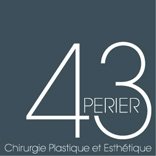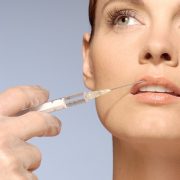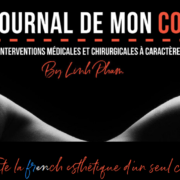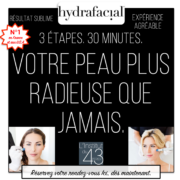| BIA-ALCL: Surgeons’ Frequently Asked Questions
Q: What is BIA-ALCL?
A: BIA-ALCL (Breast Implant-Associated Anaplastic Large Cell Lymphoma) is a rare spectrum of disease that can range from a indolent accumulation of fluids around the breast (seroma) to a potentially metastatic lymphoma especially when there are delays in diagnosis. It is a disease that ranges from indolent to full-blown metastatic disease when not caught early. BIA-ALCL is not a cancer of the breast tissue itself. When diagnosed early, it is readily curable. If the disease is advanced, chemotherapy or radiation may be required.
BIA-ALCL is currently classified as a lymphoma. Many experts believe that it behaves clinically as a lymphoproliferative disorder (LPD) that encompasses the spectrum of disease from benign CD30+ seromas, to CD30+ malignant seromas, to invasive capsular disease, and finally metastatic disease. Current ASERF research is underway to further understand the proper classification of this disorder. Similar to LPDs, BIA-ALCL is a highly treatable disease with high cure rates.
Q. Have there been any deaths due to BIA-ALCL?
A. There have been 16 confirmed deaths, (globally), attributed to BIA-ALCL since the disease was first reported nearly 20 years ago.
Q: What are the symptoms of BIA-ALCL?
A: The first symptom of BIA-ALCL is usually a swelling of the breast between 2 to 28 years after the insertion of breast implants, with an average of about 8 years after implantation. The swelling is due to a collection of fluid surrounding the implant. This fluid can cause the breast to enlarge significantly over a period of days or weeks. It can also present as a lump in the breast or armpit, firmness of the breast, or pain. It is usually easily and completely treated if patients see their doctor at the first symptom.
Q: What is the risk of developing BIA-ALCL?
A: Based on current data, the risk can be explained by the texture grade of the implants as follows:
· Grade 1 (Smooth only) – The current lifetime risk is zero.
· Grade 2 (e.g. Microtexture, Siltex and similar) – 1:82,000
· Grade 3 (e.g. Macrotexture, Biocell and similar) – 1:3,200
· Grade 4 (e.g. Polyurethane) – 1:2,800*
*Based on data form an Australian study – however this was 100% Silimed PU implants that had a manufacturing defect and have since been taken off the market.
Loch-Wilkinson, A., et al. (2017). « Breast Implant-Associated Anaplastic Large Cell Lymphoma in Australia and New Zealand: High-Surface-Area Textured Implants Are Associated with Increased Risk. » Plast Reconstr Surg 140(4): 645-654
Q: If a breast implant patient sees a plastic surgeon when she develops a first symptom, will she be cured?
A: That answer is not known and is a very important piece of information for patients and plastic surgeons. Most of the time patients see their plastic surgeon right away when they develop significant swelling of the breast. In these cases, the disease is almost always caught early and cured with a straightforward operation. Some women with advanced disease ignored earlier symptoms or saw a doctor who did not properly diagnose them. There are a few patients who presented with advanced disease who said that they never had earlier symptoms.
Q: Can you explain the differences in implant texture and what role that factor plays in the research?
A: Although it is rare, BIA-ALCL appears to currently develop exclusively in women with textured implants. To date there has not been a case of BIA-ALCL in a patient with only smooth implants. There are several theories which attempt to explain the higher rate for textured implant patients: many believe that the increased surface area of textured implants allows a higher number of bacteria around the implant, which forms a biofilm in some patients, and can result in chronic inflammation, ultimately leading to a proliferation of lymphocytes (a type of white blood cell). Less accepted theories are that textured implants create greater inflammation because of chronic mechanical irritation, and another postulates that microscopic shedding of silicone from the textured wall induces inflammation.
Q: Is it a problem with Saline or Silicone implants?
A: Of the 414 reported cases of BIA-ALCL, 312 reports included information on the types of implants used. Of those,234 reported implants with silicone gel and 119 reported implants filled with saline. It appears to purely be related to the surface of the implant and not to what the implant is filled with.
Q: How does this impact those with breast implants?
A: ASAPS and ASERF emphasize that the most important issue for women with breast implants is to screen for breast cancer with self-exam, a regular physician exam, and mammography/ultrasound/MRI as recommended by their physician. Regardless of BIA-ALCL, all women should see their plastic surgeon immediately if they note a change to the size, feel, or shape of their breasts.
Q: What about those considering breast implants?
A: BIA-ALCL is only associated with textured surface implants so this is not relevant to patients considering smooth-walled breast implants. But patients considering textured breast implants should discuss this issue with their plastic surgeon. Since our knowledge of this condition is continuing to evolve, thanks in large part to ASERF-sponsored research, patients should check surgery.org and the FDA website for any updates.
Q: What if a doctor is recommending textured implants to a patient?
A: The choice of implant type is ultimately a decision between an educated patient and her board certified plastic surgeon. There may be certain circumstances where a textured implant is recommended for particular patients.
All patients should have a detailed conversation with their surgeon about the risks associated with textured implants, beyond what is published online or in pamphlets. Ultimately, there are instances where textured implants are the best choice for them.
Q: How is BIA-ALCL diagnosed?
A: If a woman develops swelling in an augmented breast, she should undergo an ultrasound scan. If fluid is detected, it should be drained and tested for:
1. Cytology
2. CD30
CD30 immunohistochemistry is not diagnostic for BIA-ALCL; however, it is a marker for activated T-Cells. If a patient’s seroma is CD30 positive, and the cytology is negative, this likely represents a precursor to BIA-ALCL, and should be treated with total capsulectomy. If the seroma test is CD30 negative with negative cytology, then it should be treated as a benign seroma using the individual surgeon’s protocol.
The majority of seromas seen clinically are benign seromas and not BIA-ALCL.
Management of all seromas should be by a board-certified plastic surgeon. Mammograms are not useful in diagnosing BIA-ALCL. In confirmed cases PET or MRI/CT scans may be used to help stage the disease.
If a patient wants to have their textured implants removed and replaced, the options are:
· Exchange to smooth implants
· Exchange to smooth implants with a capsulectomy
Q. How is BIA-ALCL treated and what is the prognosis?
A. Current recommendations for the treatment of BIA-ALCL call for bilateral capsulectomy (removing all the scar tissue) and removal of the old breast implants. This is a very common procedure performed by plastic surgeons, identical to what is done when an implant has ruptured or capsular contracture has developed. Smooth implants can be put back in or the patient can choose not to have implants. In all early stage cases, the disease has been fully resolved by this surgery alone. The majority of patients require no additional treatment. However, if the disease has spread to lymph nodes or grown into the adjacent tissues, chemotherapy and radiation may be necessary. These are very serious treatments with significant side effects.
Q: Are some patients at greater risk than others?
A: The rates of BIA-ALCL seem to have different rates throughout the world. This may be due to different reporting and registries, but there is likely to be a genetic predisposition that is not yet fully understood. For instance, as of this time there are very few cases in Asian patients. The risk is only with textured implants and not smooth implants; the rate is no different between silicone and saline; it occurs in both cosmetic and reconstructive patients. There is no test to determine whether one textured implant patient is at any more risk of developing this disorder than any other patients.
Q: Should patients have their implants removed because of BIA-ALCL?
A: Since BIA-ALCL has only been found with textured breast implants, smooth implant patients do not need to be concerned. For textured implant patients, neither the FDA nor any plastic surgery society currently recommends that women should preventatively remove textured breast implants to prevent BIA-ALCL. However, there are women who have been concerned enough about BIA-ALCL and have chosen to have their implants removed. There are some women who were already considering a breast implant revision, and the BIA-ALCL issue gave them one more reason to decide to proceed.
Breast implant patients should have ongoing follow up. Current FDA recommendations and ASAPS recommendations indicate that patients with textured implants with no issues should not do anything and implant removal is not recommended.
Q: Should women with breast implants be screened for BIA-ALCL?
A: There is no blood test to specifically screen for BIA-ALCL. The expert opinion is that asymptomatic women without breast changes do not require more than routine mammograms and breast exams. But if a patient experiences a change in her breasts – especially if there is swelling or a lump – she should undergo immediate examination, imaging, and consultation with a plastic surgeon. If there is fluid around the implant the fluid should be aspirated under ultrasound guidance and sent for analysis.
Q: What causes BIA-ALCL?
A: ASAPS, ASERF, the FDA, and the implant manufacturers are intensely studying BIA-ALCL. To date, no specific causal factors have been identified. Implant texturing, bacteriologic contamination, and genetic factors have been implicated and are undergoing further study.
The best theory today is that a combination of four factors are required for the development of BIA-ALCL:
· Textured implants
· Chronic bacterial-inflammation
· Genetic predisposition
· Time
The source of the chronic inflammation is thought to be bacteria that have been identified around the implants in affected breasts. Evidence is accumulating that a long-term inflammatory response to the presence of these bacteria is one of the factors that may cause BIA-ALCL. Research is ongoing and cases are being monitored.
Genetic factors may play a role. Some geographic areas have reported very few cases. Ongoing data collection worldwide will help to determine whether or not there are any genetic propensities for this disease.
Q: Does ASAPS recommend against the use of textured implants?
A: The available data does not support discontinuance of textured implants. The best practice is always for the physician to discuss with each patient the known risks and potential complications associated with any procedure. It is important for the patient and her doctor to frankly discuss all options available, and the risks involved.
Every plastic surgeon offers patients options regarding breast implants in terms of sizing, shape, and surface. Depending on a particular patient’s needs, a textured implant may be preferable. The plastic surgeon must provide a frank and transparent discussion regarding the benefits and risks of implants, both smooth and textured. The patient must then make an informed decision, based upon her own assessment of her needs and the risks involved.
Every plastic surgeon needs to help each individual patient make her own decision about which implant she prefers in a fully transparent manner. This involves weighing any possible increased risks against the advantages offered by a particular type of implant. It is critical that the patient makes a fully informed decision following a full discussion of the risks and benefits.
Q: What is the recommended clinical response to a patient presenting with symptoms that could be attributable to ALCL?
A. Detailed information can be found on the ASAPS website here.
Q: Where can I find more information on BIA-ALCL?
A: Additional information and resources on BIA-ALCL are available online here.
Q: Is there any assistance available to the patient?
A: The Mollenkopf Aesthetic Breast Reconstruction Fund and the BIA-ALCL Patient Assistance Fund can offer financial assistance to patients. Additionally, Sientra offers to cover lab testing for any seromas associated with their implants.
· The Mollenkopf Aesthetic Breast Reconstruction Fund: http://www.aserf.org/attachments/223_mollenkopf-grant-request-form.pdf. The Mollenkopf Aesthetic Breast Reconstruction Fund The Aesthetic Surgery Education and Research Foundation (ASERF) is pleased to announce available funding for breast reconstruction patients. The Mollenkopf Aesthetic Breast Reconstruction Fund provides grants to ASERF/ASAPS member surgeons, to financially assist patients in completing their aesthetic breast reconstruction journeys. These funds are intended to help underinsured or uninsured patients nationwide cover the associated costs with breast reconstruction. The goal of this fund is to provide women with limited financial means the opportunity to achieve the best possible aesthetic breast reconstruction result. In particular, the grant is focused on women who need a final surgery or revisional surgery to complete their aesthetic reconstruction. The goal is for ASERF/ASAPS members to help women feel good about themselves after their reconstruction and aid them in returning “back to me.”
· The BIA-ALCL Patient Assistance Fund: http://www.aserf.org/images/documents/bia-alcl-patient-fund-grant-request-form.pdf. The American Society for Aesthetic Plastic Surgery (ASAPS) and the American Society of Plastic Surgeons (ASPS), in conjunction with the Aesthetic Surgery Education and Research Foundation (ASERF) and the Plastic Surgery Foundation (PSF), are pleased to announce funding for patients diagnosed with breast implant associated anaplastic large cell lymphoma (BIA-ALCL). These funds are intended to help underinsured or uninsured patients who are seeking surgical treatment of BIA-ALCL, total capsulectomy and explantation, and excision of associated mass with biopsy of suspicious node(s) and implant-based reconstruction, if indicated. The goal of this Fund is for ASAPS, ASPS, ASERF, and PSF members to help patients obtain treatment when insurance limitations would have otherwise restricted their ability to do so. The Fund is made possible by generous contributions from Allergan, Mentor Worldwide, LLC and Sientra, Inc.
· Sientra: http://sientra.com/Content/pdfs/LGL-0006%20R2-Sientra%20Warranty%20Terms%20and%20Conditions.pdf. The Sientra Platinum20™ Product Replacement and Limited Warranty Program for Sientra Opus™ Silicone Gel Breast Implants (Smooth and Textured Surface) offers assistance with patients presenting with late-forming seromas.
Q: What research is being conducted?
A: ASERF is currently funding two BIA-ALCL studies on the Pathogenesis of BIA-ALCL and Genomic Profiling to Understand the Pathogenesis of BIA-ALCL.
ASERF is sponsoring leading, cutting edge research on BIA-ALCL to better define the disease and improve diagnosis and outcome. More information can be found on the ASERF website: www.aserf.org
If you haven’t donated to ASERF, here’s the link: http://www.aserf.org/donor-benefits/make-a-differencehttp://www.aserf.org/donor-benefits/make-a-difference
BIA-ALCL: Patients’ Frequently Asked Questions
Q: What is BIA-ALCL?
A: : BIA-ALCL (Breast Implant-Associated Anaplastic Large Cell Lymphoma) is a rare spectrum of disorders that can range from a benign collection of fluids around the breast implant (seroma) to a rare lymphoma. BIA-ALCL is not a cancer of the breast tissue itself. When caught early, it is readily curable. If the disease is advanced, chemotherapy or radiation may be required.
Q: What are the symptoms of BIA-ALCL?
A: The first symptom of BIA-ALCL is usually a swelling of the breast between 2 to 28 years after the insertion of breast implants, with an average of about 8 years after implantation. The swelling is due to a collection of fluid surrounding the implant. This fluid can cause the breast to enlarge significantly over a period of days or weeks. It can also present as a lump in the breast or armpit, firmness of the breast, or pain. It is usually easily and completely treated if patients see their doctor at the first symptom.
Q: What is the risk of developing BIA-ALCL?
A: Based on current data, the risk can be explained by the texture grade of the implants as follows:
· Grade 1 (Smooth only) – The current lifetime risk is zero.
· Grade 2 (e.g. Microtexture, Siltex and similar) – 1:82,000
· Grade 3 (e.g. Macrotexture, Biocell and similar) – 1:3,200
· Grade 4 (e.g. Polyurethane) – 1:2,800*
Q: Have there been any deaths due to BIA-ALCL?
A. There have been 16 confirmed deaths, (globally), attributed to BIA-ALCL since the disease was first reported nearly 20 years ago. However, when detected early before it becomes a lymphoma, BIA-ALCL is readily cured with removal of the implant and surrounding scar pocket or capsule.
Q: Is it a problem with Saline or Silicone implants?
A: Of the 414 reported cases of BIA-ALCL, 312 reports included information on the types of implants used. Of those,234 reported implants with silicone gel and 119 reported implants filled with saline. It appears to purely be related to the surface of the implant and not to what the implant is filled with.
https://www.fda.gov/MedicalDevices/ProductsandMedicalProcedures/ImplantsandProsthetics/BreastImplants/ucm481899.htm
As of September 30, 2017, the FDA has received a total of 414 medical device reports (MDRs) of breast implant-associated anaplastic large cell lymphoma (BIA-ALCL), including 9 deaths1. BIA-ALCL are counted for those with a confirmed pathology test, or ALK or CD30 biomarkers, or reported by health care professionals. There are 272 reports with data on surface information at the time of reporting. Of these, 242 were on textured implants and 30 on smooth implants. There are 413 reports with data on implant fill type. Of these, 234 reported the use of silicone gel-filled implants, and 179 reported the use of saline-filled implants.
Q: How does this impact those with breast implants?
A: ASAPS and ASERF emphasize that the most important issue for women with breast implants is to screen for breast cancer with self-exam, a regular physician exam, and mammography/ultrasound/MRI as recommended by their physician. All women should see their plastic surgeon immediately if they note a change to the size, feel, or shape of their breasts.
Q: Why would my surgeon have recommended textured implants for me?
A: There are two primary reasons your surgeon may have recommended textured surface breast implants. First is that some data has shown a lower rate of capsular contracture (firm scar tissue formation around the implant). Second, all teardrop or anatomic shaped implants have a textured surface to help hold them in place. Some surgeons believe these implants can offer an enhanced shape for certain patients, perhaps with a reduced risk of rippling.
Q. How is BIA-ALCL treated and what is the prognosis?
A. Current recommendations for the treatment of BIA-ALCL call for bilateral capsulectomy (removing all the scar tissue) and removal of the old breast implants. This is a very common procedure performed by plastic surgeons, identical to what is done when an implant has ruptured or capsular contracture has developed. Smooth implants can be put back in or the patient can choose not to have implants. In all but a few cases, the disease has been fully resolved by this surgery alone. The majority of patients require no additional treatment. However, if the disease has spread to lymph nodes or adjacent tissues, chemotherapy or radiation may be necessary. This has only been necessary in a small percentage of patients.
Q: Should patients have their implants removed because of a risk of BIA-ALCL?
A: Since BIA-ALCL has only been found with textured breast implants, smooth implant patients do not need to be concerned. For textured implant patients, neither the FDA nor any plastic surgery society currently recommends that women should preventatively remove textured breast implants to prevent BIA-ALCL. However there are women who have been concerned enough about BIA-ALCL and have chosen to have their implants removed. There are some women who were already considering a breast implant revision, and the BIA-ALCL issue gave them one more reason to decide to proceed.
Q: Should women with breast implants be screened for BIA-ALCL?
A: There is no blood test to specifically screen for BIA-ALCL. The expert opinion is that asymptomatic women without breast changes do not require more than routine mammograms and breast exams. But if a patient experiences a change in her breasts – especially if there is swelling or a lump – she should undergo immediate examination, imaging, and consultation with a plastic surgeon. If there is fluid around the implant the fluid should be aspirated under ultrasound guidance and sent for analysis.
Q: What causes BIA-ALCL?
A: ASAPS, ASERF, the FDA, and the implant manufacturers are intensely studying BIA-ALCL. To date, no specific causal factors have been identified. Implant texturing, bacteriologic contamination, and genetic factors have been implicated and are undergoing further study. The best theory today is that a combination of four factors are required for the development of BIA-ALCL:
1. Highly textured implant
2. Chronic bacterial-inflammation
3. Genetic pre-disposition
4. Time
The source of the chronic inflammation is thought to be bacteria that have been identified around the implants in affected breasts. Evidence is accumulating that a long-term inflammatory response to the presence of these bacteria is one of the factors that may cause BIA-ALCL. Research is ongoing and cases are being monitored.
Genetic factors may play a role. Some geographic areas have reported very few cases. Ongoing data collection worldwide will help to determine whether or not there are any genetic propensities for this disease.
Q: Does ASAPS recommend against the use of textured implants?
A: The available data does not support discontinuance of textured implants. The best practice is always for the physician to discuss with each patient the known risks and potential complications associated with any procedure. It is important for the patient and her doctor to frankly discuss all options available, and the risks involved.
Every plastic surgeon offers patients options regarding breast implants in terms of sizing, shape, and surface. Depending on a particular patient’s needs, a textured implant may be preferable. The plastic surgeon must provide a frank and transparent discussion regarding the benefits and risks of implants, both smooth and textured. The patient must then make an informed decision, based upon her own assessment of her needs and the risks involved. |






